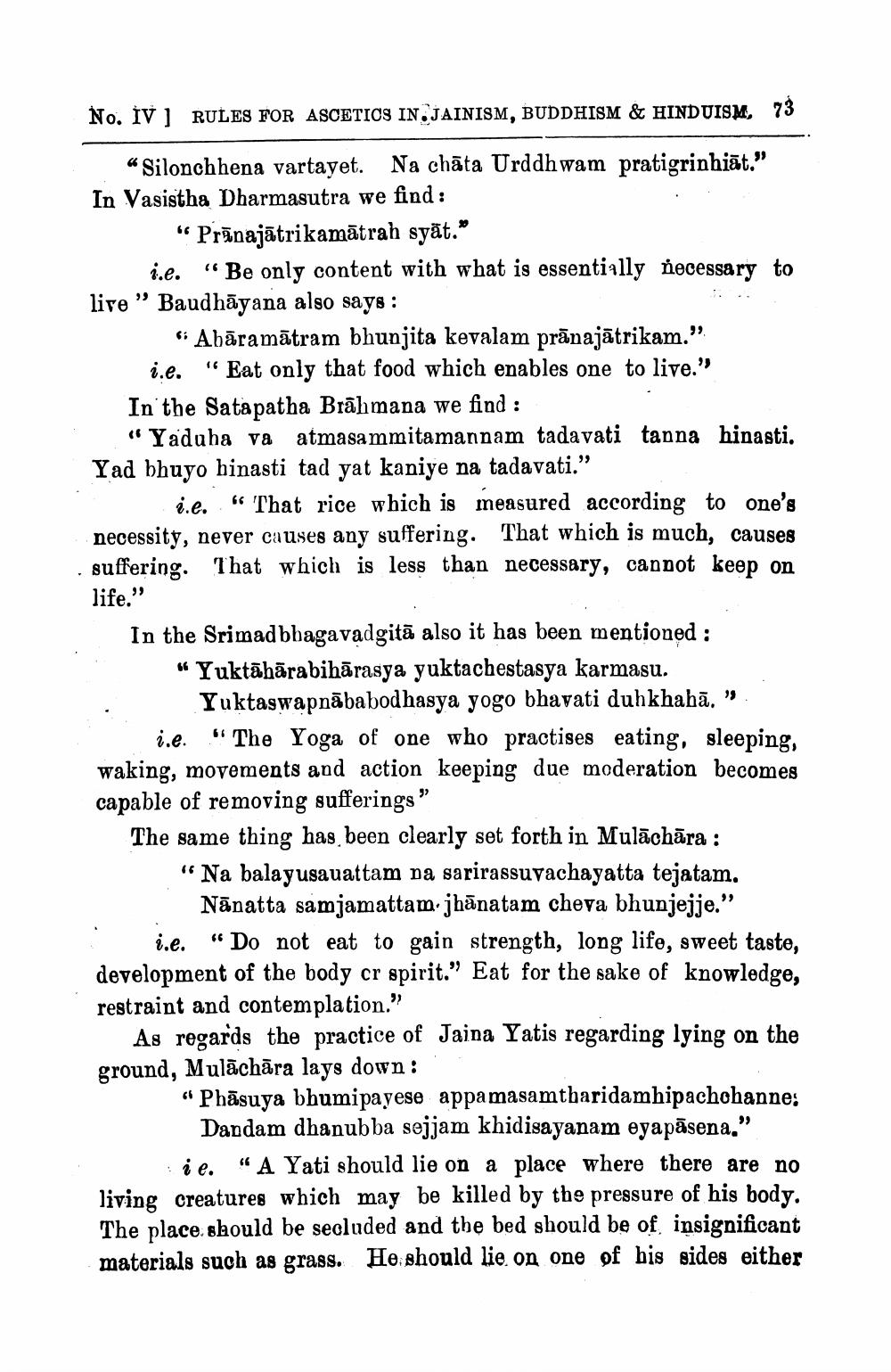________________
No. ÎV ] RULES FOR ASCETICS IN.JAINISM, BUDDHISM & HINDUISM. 73
“Silonch hena vartayet. Na chāta Urddhwam pratigrinhiāt." In Vasistha Dharmasutra we find :
"Prānajātrikamātrah syät."
i.e. "Be only content with what is essentially necessary to live ” Baudhāyana also says :
"Ahāramātram bhunjita kevalam prānajātrikam." i.e." Eat only that food which enables one to live." In the Satapatha Brāhmana we find :
" Yaduha va atmasammitamannam tadavati tanna hinasti. Yad bhuyo binasti tad yat kaniye na tadavati.”
¿.e. " That rice which is measured according to one's necessity, never causes any suffering. That which is much, causes . suffering. That which is less than necessary, cannot keep on life.” In the Srimadbhagavadgitā also it has been mentioned :
“ Yuktāhārabihārasya yuktachestasya karmasu.
Yuktaswapnābabod hasya yogo bhavati duhkhahā.". i.e. "The Yoga of one who practises eating, sleeping, waking, movements and action keeping due moderation becomes capable of removing sufferings” The same thing has been clearly set forth in Mulāchāra :
"Na balayusauattam na sarirassuvachayatta tejatam.
Nānatta samjamattam.jhānatam cheva bhunjejje." i.e. “Do not eat to gain strength, long life, sweet taste, development of the body cr spirit.” Eat for the sake of knowledge, restraint and contemplation."
As regards the practice of Jaina Yatis regarding lying on the ground, Mulāchāra lays down:
" Phāsuya bhumipayese appamasamtharidamhipachohanne:
Dandam dhanubba sejjam khidisayanam oyapāsena."
ie. “A Yati should lie on a place where there are no living creatures which may be killed by the pressure of his body. The place should be secluded and the bed should be of insignificant materials such as grass. He should lie on one of his sides either




